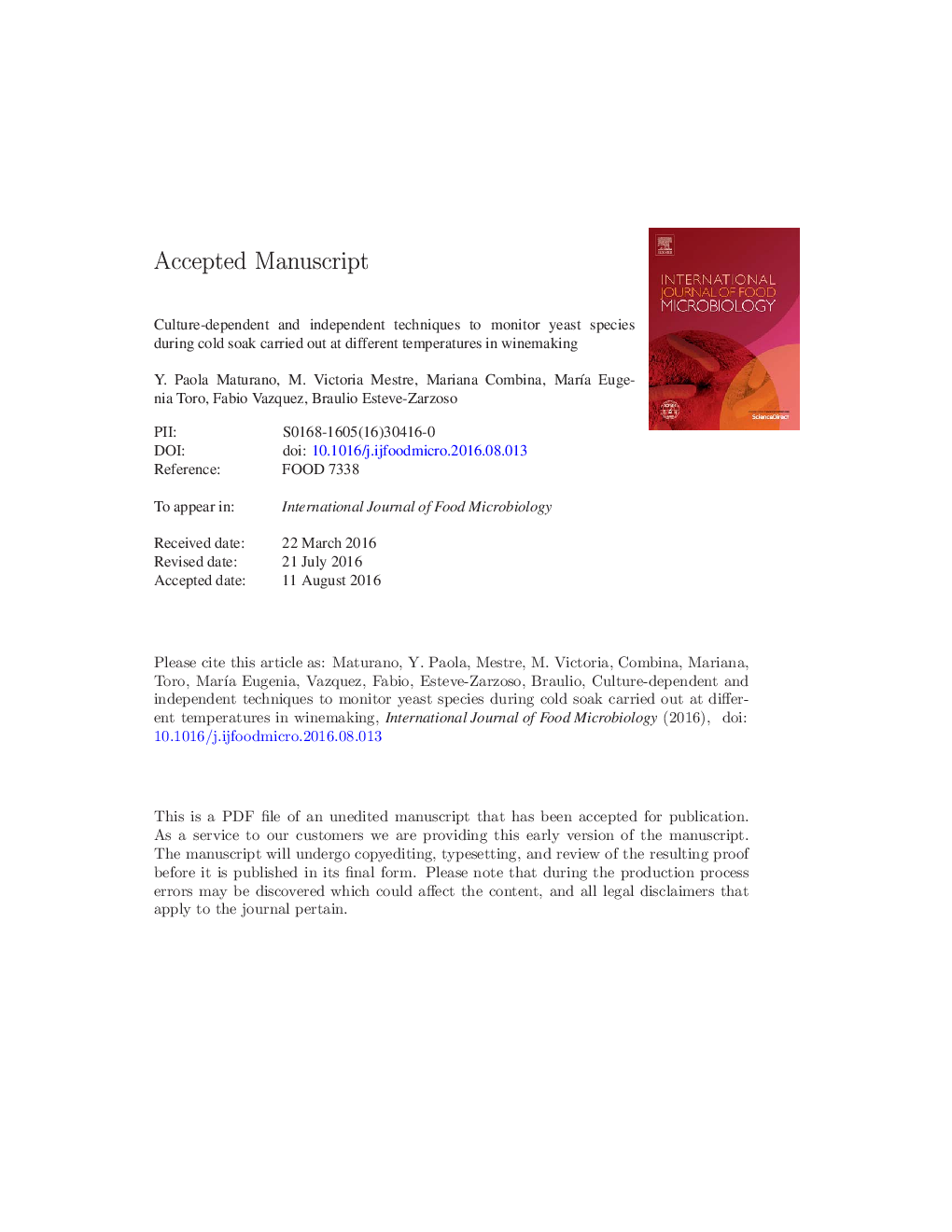| Article ID | Journal | Published Year | Pages | File Type |
|---|---|---|---|---|
| 6289735 | International Journal of Food Microbiology | 2016 | 37 Pages |
Abstract
Transformation of grape must into wine is a process that may vary according to the consumers' requirements. Application of cold soak prior to alcoholic fermentation is a common practice in cellars in order to enhance flavor complexity and extraction of phenolic compounds. However, the effect of this step on wine yeast microbiota is not well-known. The current study simultaneously analyzed the effect of different cold soak temperatures on the microbiological population throughout the process and the use of culture-dependent and independent techniques to study this yeast ecology. The temperatures assayed were those normally applied in wineries: 2.5, 8 and 12 °C. PCR-DGGE allowed detection of the most representative species such as Hanseniaspora uvarum, Starmerella bacillaris and Saccharomyces cerevisiae. As could be expected, highest diversity indices were obtained at the beginning of each process, and survival of H. uvarum or S. bacillaris depended on the temperature. Our results are in agreement with those obtained with culture independent methods, but qPCR showed higher precision and a different behavior was observed for each yeast species and at each temperature assayed. Comparison of both culture-independent techniques can provide a general overview of the whole process, although DGGE does not reveal the diversity expected due to the reported problems with the sensitivity of this technique.
Related Topics
Life Sciences
Agricultural and Biological Sciences
Food Science
Authors
Y. Paola Maturano, M. Victoria Mestre, Mariana Combina, MarÃa Eugenia Toro, Fabio Vazquez, Braulio Esteve-Zarzoso,
